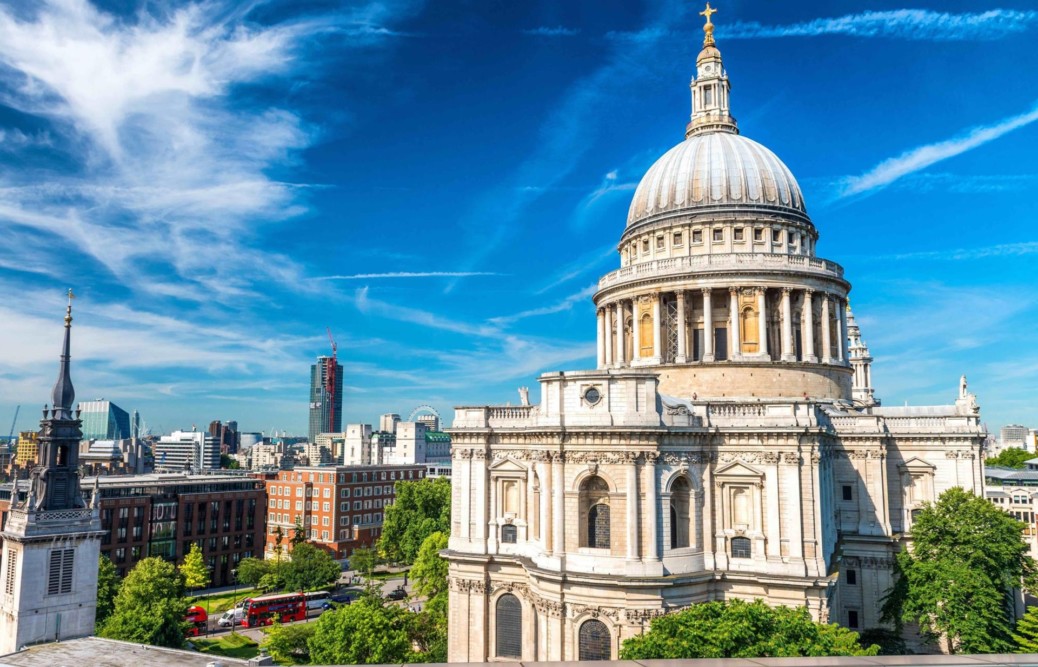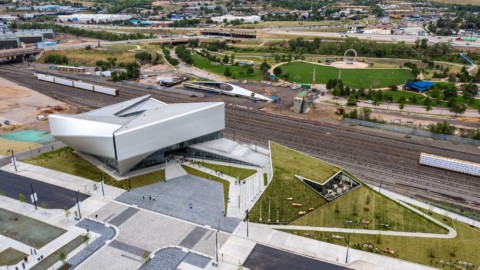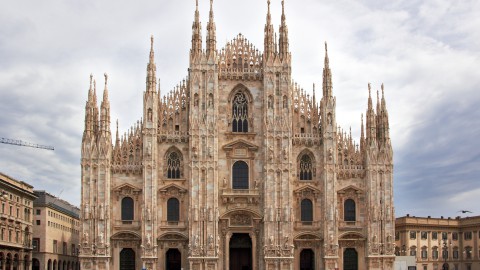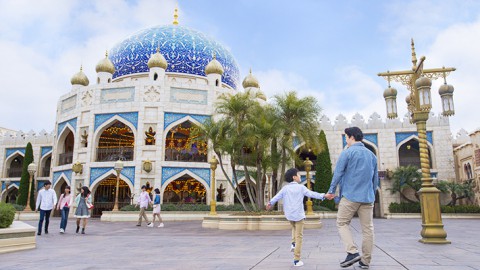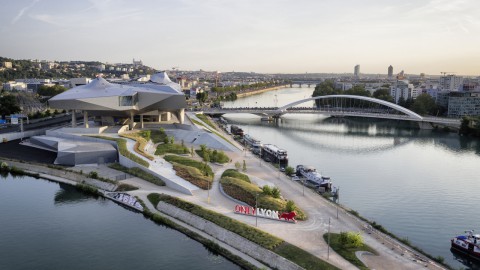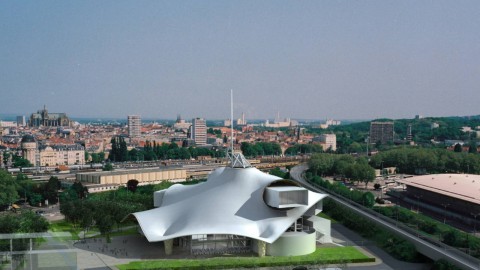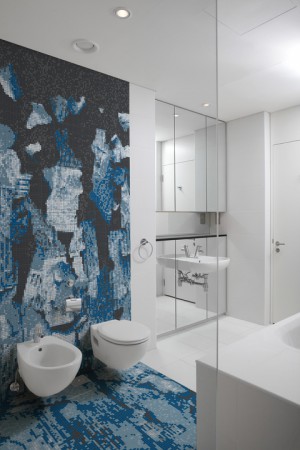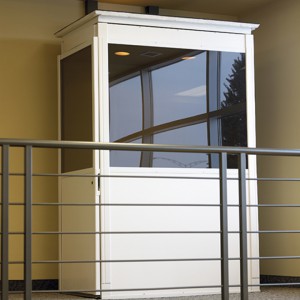St Paul’s Cathedral 聖保羅大教堂
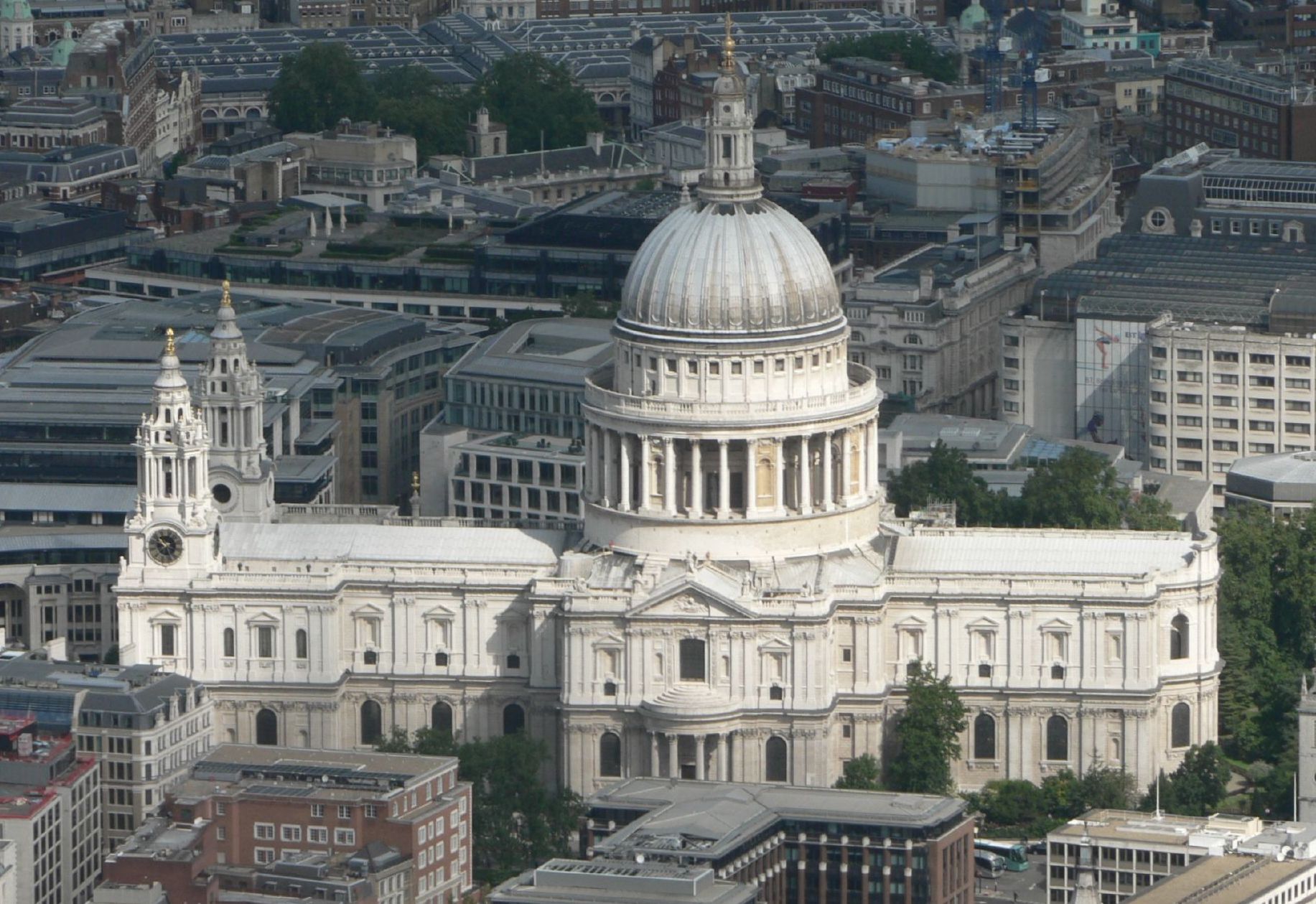
St Paul’s Cathedral, London, is an Anglican cathedral, the seat of the Bishop of London and the mother church of the Diocese of London. It sits on Ludgate Hill at the highest point of the City of London and is a Grade I listed building. Its dedication to Paul the Apostle dates back to the original church on this site, founded in AD 604. The present cathedral, dating from the late 17th century, was designed in the English Baroque style by Sir Christopher Wren. Its construction, completed in Wren’s lifetime, was part of a major rebuilding programme in the City after the Great Fire of London. The cathedral building largely destroyed in the Great Fire, now often referred to as Old St Paul’s Cathedral, was a central focus for medieval and early modern London, including Paul’s walk and St Paul’s Churchyard being the site of St Paul’s Cross.
The cathedral is one of the most famous and most recognisable sights of London. Its dome, framed by the spires of Wren’s City churches, has dominated the skyline for over 300 years. At 365 feet (111 m) high, it was the tallest building in London from 1710 to 1967. The dome is among the highest in the world. St Paul’s is the second-largest church building in area in the United Kingdom after Liverpool Cathedral.
Services held at St Paul’s have included the funerals of Admiral Nelson, the Duke of Wellington, Winston Churchill and Margaret Thatcher; jubilee celebrations for Queen Victoria; peace services marking the end of the First and Second World Wars; the wedding of Prince Charles and Lady Diana Spencer; the launch of the Festival of Britain; and the thanksgiving services for the Silver, Golden and Diamond Jubilees and the 80th and 90th birthdays of Queen Elizabeth II. St Paul’s Cathedral is the central subject of much promotional material, as well as of images of the dome surrounded by the smoke and fire of the Blitz.
The cathedral is a working church with hourly prayer and daily services. The tourist entry fee at the door is £20 for adults (January 2019, cheaper online), but no charge is made to worshippers.
倫敦聖保羅大教堂是英國國教大教堂,是倫敦主教的所在地和倫敦主教管區的主教堂。它位於倫敦金融城最高點的拉德蓋特山(Ludgate Hill)上,是一級保護建築。它對使徒保羅的奉獻可以追溯到該遺址上的原始教堂,該教堂建於公元604年。現有的大教堂的歷史可以追溯到17世紀末,由克里斯托弗·雷恩爵士設計,採用英國巴洛克風格。在雷恩(Wren)的一生中完成的建築,是倫敦大火過後紐約市一項重大重建計劃的一部分。大教堂建築在大火中被嚴重破壞,現在通常被稱為舊聖保羅大教堂,是中世紀和早期現代倫敦的主要焦點,包括保羅的步行道和聖保羅教堂的院子就是聖保羅十字架的所在地。
大教堂是倫敦最著名和最知名的景點之一。它的圓頂由雷恩(Wren’s)教堂的尖頂構架,在天際線中佔據了300多年的歷史。它高365英尺(111 m),是1710年至1967年倫敦最高的建築物。圓頂是世界上最高的建築物之一。聖保羅大教堂是英國地區第二大教堂建築,僅次於利物浦大教堂。
在聖保羅大教堂舉行的服務包括納爾遜海軍上將,惠靈頓公爵,溫斯頓·丘吉爾和瑪格麗特·撒切爾的葬禮;維多利亞女王周年慶典;和平服務標誌著第一次和第二次世界大戰的結束;查爾斯王子和戴安娜·斯賓塞夫人的婚禮;英國音樂節的啟動;以及銀禧,金禧和鑽石禧年以及伊麗莎白二世女王80歲和90歲生日的感恩節服務。聖保羅大教堂是許多宣傳材料以及閃電戰的煙霧籠罩的圓頂圖像的中心主題。
大教堂是一座工作的教堂,每小時祈禱一次,並提供每日服務。成人門口的遊客入場費為20英鎊(2019年1月,在線更便宜),但對信徒不收取任何費用。
Coordinates: 51°30′49″N 0°05′53″W
Location:London, EC4
Country:United Kingdom
Denomination:Church of England
History
Consecrated:1697; 323 years ago
St Paul’s Cathedral
Architecture
Heritage designation:Grade I Listed
Previous cathedrals:4
Architect(s):Sir Christopher Wren
Surveyor of the Fabric of St Paul’s Cathedral
Style:English Baroque
Years built:1675
St Paul’s Cathedral
Construction cost:Construction cost covered by a special tax on coal.
Specifications
Length:518ft (158 m)
Nave width:121ft (37 m)
Width across transepts:246ft (75 m)
Height:365ft (111 m)
Dome height (outer):278ft (85 m)
Dome height (inner):225ft (68 m)
Dome diameter (outer):112ft (34 m)
Dome diameter (inner):102ft (31 m)
Number of towers:2
Tower height:221ft (67 m)
Administration
Diocese London (since 604)
Province:Canterbury
Clergy
Bishop(s):Sarah Mullally
Dean:David Ison
Precentor:James Milne
Chancellor:Paula Gooder (reader)
Canon Treasurer:Jonathan Brewster
Pastor(s):Tricia Hillas
Laity
Director of music:Andrew Carwood
Organist(s):Simon Johnson
坐標:51°30′49″ N 0°05′53″ W
所在地:EC4,倫敦
國家:英國
單位名稱:英格蘭教堂
歷史
奉獻:1697; 323年前
聖保羅大教堂
建築
遺產名稱:一級
以前的大教堂:4
建築師:克里斯托弗·雷恩爵士
聖保羅大教堂的面料測量師
風格:英式巴洛克
建造年代:1675
聖保羅大教堂
建設成本:建設成本由煤炭特別稅支付。
技術指標
長度:158英尺(518英尺)
中殿寬度:37毫米(121英尺)
跨接寬度:246英尺(75 m)
高度:111英尺(365英尺)
圓頂高度(外部):85英尺(278英尺)
圓頂高度(內部):68英尺(225英尺)
圓頂直徑(外部):34毫米(112英尺)
圓頂直徑(內部):31毫米(102英尺)
塔數:2
塔高:221ft(67 m)
管理
倫敦教區(始於604)
省份:坎特伯雷
牧師
主教:莎拉·穆拉利(Sarah Mullally)
院長:戴維·艾森
主持人:詹姆斯·米爾恩
校長:寶拉·古德(讀者)
佳能財務主管:喬納森·布魯斯特(Jonathan Brewster)
牧師:Tricia Hillas
俗人
音樂總監:安德魯·卡伍德(Andrew Carwood)
主辦單位:西蒙·約翰遜(Simon Johnson)
Development of the design
In designing St Paul’s, Christopher Wren had to meet many challenges. He had to create a fitting cathedral to replace Old St Paul’s, as a place of worship and as a landmark within the City of London. He had to satisfy the requirements of the church and the tastes of a royal patron, as well as respecting the essentially medieval tradition of English church building which developed to accommodate the liturgy. Wren was familiar with contemporary Renaissance and Baroque trends in Italian architecture and had visited France, where he studied the work of François Mansart.
Wren’s design developed through five general stages. The first survives only as a single drawing and part of a model. The scheme (usually called the First Model Design) appears to have consisted of a circular domed vestibule (possibly based on the Pantheon in Rome) and a rectangular church of basilica form. The plan may have been influenced by the Temple Church. It was rejected because it was not thought “stately enough”. Wren’s second design was a Greek cross, which was thought by the clerics not to fulfil the requirements of Anglican liturgy.
Wren’s third design is embodied in the “Great Model” of 1673. The model, made of oak and plaster, cost over £500 (approximately £32,000 today) and is over 13 feet (4 m) tall and 21 feet (6 m) long. This design retained the form of the Greek-Cross design but extended it with a nave. His critics, members of a committee commissioned to rebuild the church, and clergy decried the design as too dissimilar to other English churches to suggest any continuity within the Church of England. Another problem was that the entire design would have to be completed all at once because of the eight central piers that supported the dome, instead of being completed in stages and opened for use before construction finished, as was customary. The Great Model was Wren’s favourite design; he thought it a reflection of Renaissance beauty. After the Great Model, Wren resolved not to make further models and not to expose his drawings publicly, which he found did nothing but “lose time, and subject [his] business many times, to incompetent judges”. The Great Model survives and is housed within the Cathedral itself.
Wren’s fourth design is known as the Warrant design because it received a Royal warrant for the rebuilding. In this design Wren sought to reconcile Gothic, the predominant style of English churches, to a “better manner of architecture”. It has the longitudinal Latin Cross plan of a medieval cathedral. It is of one-and-a-half stories and has classical porticos at the west and transept ends, influenced by Inigo Jones’s addition to Old St Paul’s. It is roofed at the crossing by a wide shallow dome supporting a drum with a second cupola, from which rises a spire of seven diminishing stages. Vaughan Hart has suggested that influence in the design of the spire may have been drawn from the oriental pagoda. Not used at St Paul’s, the concept was applied in the spire of St Bride’s, Fleet Street. This plan was rotated slightly on its site so that it aligned, not with true east, but with sunrise on Easter of the year construction began. This small change in configuration was informed by Wren’s knowledge of astronomy.
設計開發
在設計聖保羅大教堂時,克里斯托弗·雷恩(Christopher Wren)必須應對許多挑戰。他不得不建造一座精巧的大教堂以取代舊聖保羅大教堂,作為禮拜場所和倫敦市內的地標建築。他必須滿足教堂的要求和皇家贊助人的口味,並尊重英國中世紀教堂建築的傳統,這種傳統是為了適應禮拜儀式而發展的。雷恩(Wren)熟悉當代文藝復興時期和意大利建築的巴洛克趨勢,並曾訪問法國,在那裡他研究了弗朗索瓦·曼薩爾(FrançoisMansart)的作品。
雷恩的設計經歷了五個總體階段。第一個僅作為單個圖紙和模型的一部分存在。該方案(通常稱為“第一模型設計”)似乎由圓形圓頂前庭(可能基於羅馬的萬神殿)和長方形大教堂組成。該計劃可能受到聖殿教堂的影響。它被拒絕,因為它被認為“不夠莊嚴”。 ren的第二個設計是希臘十字架,牧師認為這不能滿足英國國教禮儀的要求。
雷恩(Wren)的第三種設計體現在1673年的“偉大模型”中。該模型由橡木和灰泥製成,成本超過500英鎊(今天約合32,000英鎊),高13英尺(4 m),高21英尺(6 m)。長。該設計保留了希臘式交叉設計的形式,但通過中殿進行了擴展。他的批評者,受委託重建教堂的委員會成員,神職人員認為該設計與其他英國教堂過於不同,以至於無法暗示英格蘭教堂內部的任何連續性。另一個問題是,由於有八個支撐拱頂的中央墩,因此整個設計必須一次完成,而不是按照慣例分階段完成並開放使用。偉大的模特是雷恩最喜歡的設計;他認為這反映了文藝復興時期的美麗。偉大的模特之後,雷恩決心不做進一步的模特,也不要公開展示自己的繪畫,他發現,除了“浪費時間,而且使他的事務多次使不稱職的法官受害”之外,他什麼也沒做。大模型得以倖存,並被安置在大教堂內。
Wren的第四個設計被稱為“權證”設計,因為它獲得了重建的皇家授權。在此設計中,Wren試圖將哥特式建築(英國教會的主要風格)與“更好的建築風格”調和。它具有中世紀大教堂的縱向拉丁十字計劃。它有一個半個故事,在西方和半透明末端有古典門廊,這是受到Inigo Jones添加的舊聖保羅大教堂的影響。它在一個十字路口處被一個寬淺的圓頂所覆蓋,該圓頂支撐著帶有第二個沖天爐的鼓,從中升起了七個減少階段的尖頂。沃恩·哈特(Vaughan Hart)提出,尖塔設計的影響力可能來自東方寶塔。這個概念在聖保羅大教堂中並未使用,而是在聖新娘艦隊街的尖頂中應用。該計劃在其站點上稍作旋轉,以使其與真正的東方不符,但與年度復活節開始時的日出保持一致。這種結構上的微小變化是由於雷恩(Wren)對天文學的了解而引起的。
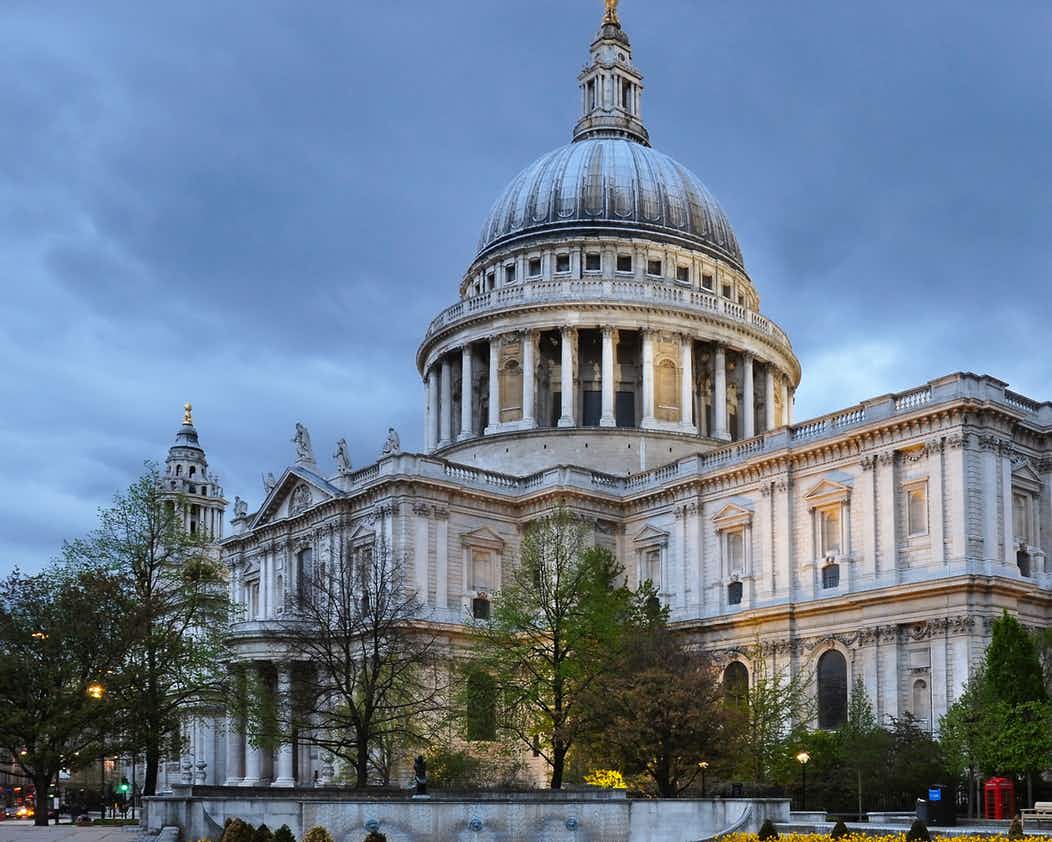
Final design
The final design as built differs substantially from the official Warrant design. Wren received permission from the king to make “ornamental changes” to the submitted design, and Wren took great advantage of this. Many of these changes were made over the course of the thirty years as the church was constructed, and the most significant was to the dome: “He raised another structure over the first cupola, a cone of brick, so as to support a stone lantern of an elegant figure … And he covered and hid out of sight the brick cone with another cupola of timber and lead; and between this and the cone are easy stairs that ascend to the lantern” (Christopher Wren, son of Sir Christopher Wren). The final design was strongly rooted in St. Peter’s Basilica in Rome. The saucer domes over the nave were inspired by François Mansart’s Church of the Val-de-Grâce, which Wren had seen during a trip to Paris in 1665.
The date of the laying of the first stone of the cathedral is disputed. One contemporary account says it was 21 June 1675, another 25 June and a third on 28 June. There is, however, general agreement that it was laid in June 1675. Edward Strong later claimed it was laid by his elder brother, Thomas Strong, one of the two master stonemasons appointed by Wren at the beginning of the work.
最終設計
最終的設計與正式的保修單設計有很大不同。雷恩(Wren)獲得國王的許可,可以對提交的設計進行“裝飾性改動”,雷恩(Wren)充分利用了這一優勢。這些變化中的許多變化都是在教堂建造三十年的過程中做出的,其中最重要的是對圓頂的變化:“他在第一個沖天爐上提出了另一種結構,即一個圓錐形的磚頭,用以支撐石燈籠。一個優雅的人物……他用另一隻圓屋頂的木材和鉛蓋住並遮住了磚制的視錐細胞;在視錐細胞和視錐細胞之間是容易爬上燈籠的階梯”(克里斯托弗·雷恩爵士的兒子克里斯托弗·雷恩) )。最終設計紮根於羅馬的聖彼得大教堂。教堂中殿的碟形穹頂的靈感來自弗朗索瓦·曼薩爾(FrançoisMansart)的瓦爾德格萊斯(Val-de-Grâce)教堂,這是雷恩(Wren)在1665年巴黎之行中看到的。
大教堂第一塊石頭的鋪設日期有爭議。一個當代的說法說是1675年6月21日,另一個是6月25日,另一個是6月28日。但是,人們普遍同意它是在1675年6月提出的。愛德華·斯特朗後來聲稱是由他的哥哥托馬斯·斯特朗(Thomas Strong)提出的,托馬斯·斯特朗是雷恩在工作開始時任命的兩個主要石匠之一。
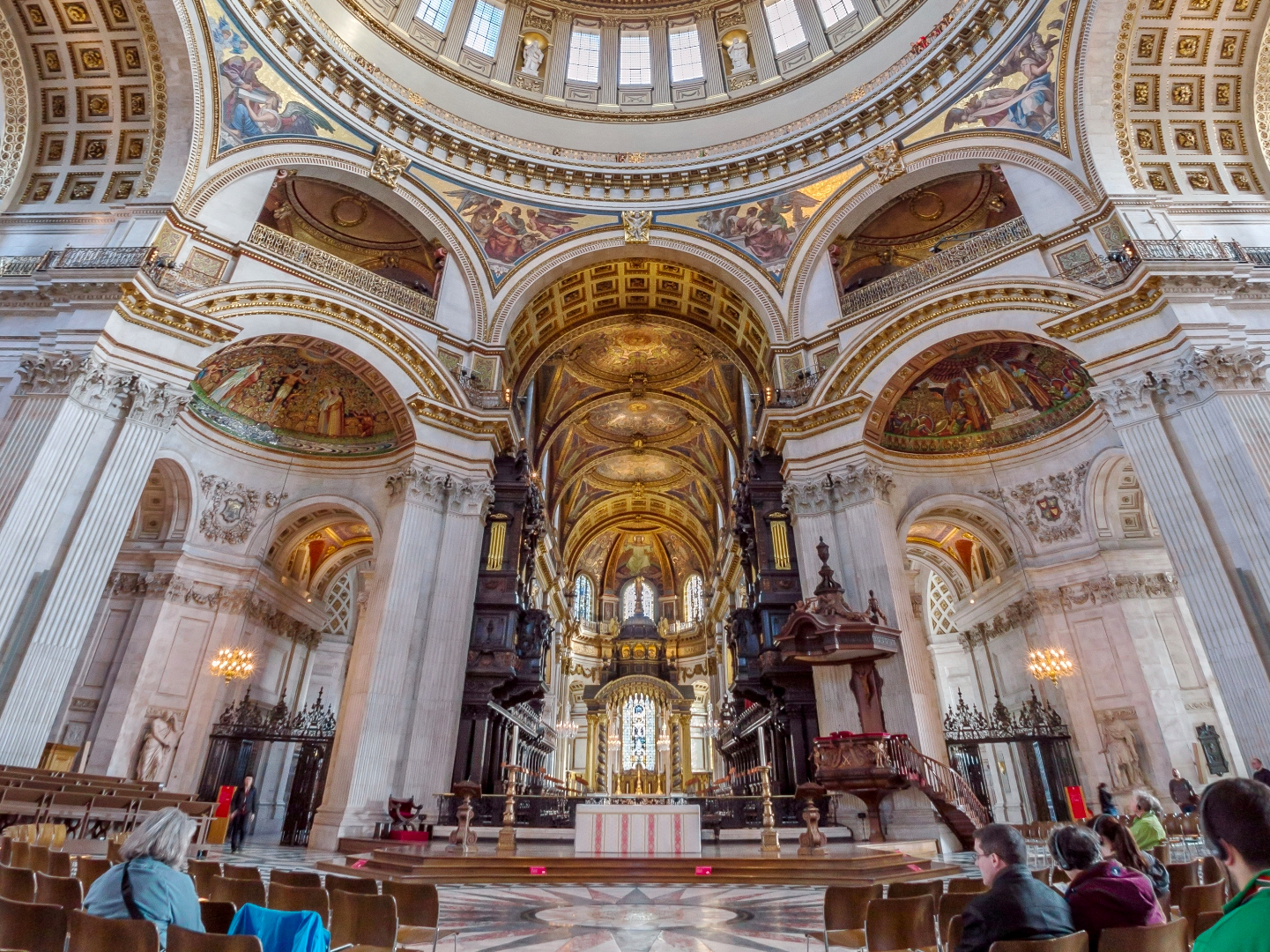
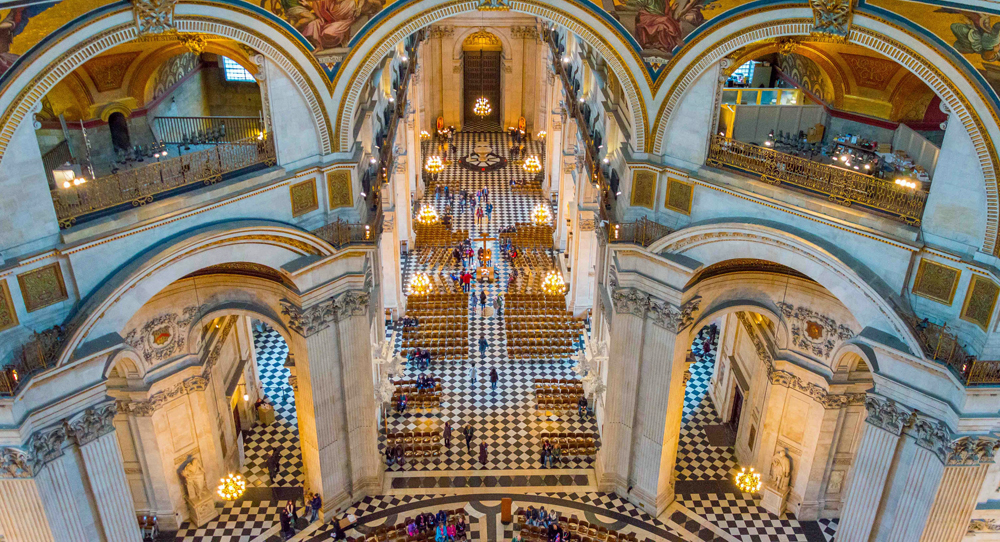
Structural engineering
Wren’s challenge was to construct a large cathedral on the relatively weak clay soil of London. St Paul’s is unusual among cathedrals in that there is a crypt, the largest in Europe, under the entire building rather than just under the eastern end. The crypt serves a structural purpose. Although it is extensive, half the space of the crypt is taken up by massive piers which spread the weight of the much slimmer piers of the church above. While the towers and domes of most cathedrals are supported on four piers, Wren designed the dome of St Paul’s to be supported on eight, achieving a broader distribution of weight at the level of the foundations. The foundations settled as the building progressed, and Wren made structural changes in response.
One of the design problems that confronted Wren was to create a landmark dome, tall enough to visually replace the lost tower of St Paul’s, while at the same time appearing visually satisfying when viewed from inside the building. Wren planned a double-shelled dome, as at St Peter’s Basilica.His solution to the visual problem was to separate the heights of the inner and outer dome to a much greater extent than had been done by Michelangelo at St Peter’s, drafting both as catenary curves, rather than as hemispheres. Between the inner and outer domes, Wren inserted a brick cone which supports both the timbers of the outer, lead-covered dome and the weight of the ornate stone lantern that rises above it. Both the cone and the inner dome are 18 inches thick and are supported by wrought iron chains at intervals in the brick cone and around the cornice of the peristyle of the inner dome to prevent spreading and cracking.
The Warrant Design showed external buttresses on the ground floor level. These were not a classical feature and were one of the first elements Wren changed. Instead he made the walls of the cathedral particularly thick to avoid the need for external buttresses altogether. The clerestory and vault are reinforced with flying buttresses, which were added at a relatively late stage in the design to give extra strength. These are concealed behind the screen wall of the upper story, which was added to keep the building’s classical style intact, to add sufficient visual mass to balance the appearance of the dome and which, by its weight, counters the thrust of the buttresses on the lower walls.
Designers, builders and craftsmen
During the extensive period of design and rationalisation Wren employed from 1684 Nicholas Hawksmoor as his principal assistant.[18][page needed] Between 1696 and 1711 William Dickinson was measuring clerk. Joshua Marshall (until his early death in 1678) and Thomas and his brother Edward Strong were master masons, the latter two working on the construction for its entirety. John Langland was the master carpenter for over thirty years. Grinling Gibbons was the chief sculptor, working in both stone on the building itself, including the pediment of the north portal, and wood on the internal fittings. The sculptor Caius Gabriel Cibber created the pediment of the south transept while Francis Bird was responsible for the relief in the west pediment depicting the Conversion of St Paul, as well as the seven large statues on the west front. The floor was paved by William Dickinson in black and white marble in 1709–10 Jean Tijou was responsible for the decorative wrought ironwork of gates and balustrades.The ball and cross on the dome were provided by an armorer, Andrew Niblett.
結構工程
雷恩(Wren)的挑戰是在倫敦相對薄弱的粘土上建造一座大型大教堂。聖保羅大教堂在大教堂中是不同尋常的,因為在整個建築下而不是在東端,有一個歐洲最大的地下室。隱窩具有結構性目的。儘管很寬敞,但地下室的一半空間被巨大的碼頭佔據,這些碼頭分散了教堂上方更細長的碼頭的重量。大多數大教堂的塔樓和圓頂都支撐在四個碼頭上,而雷恩則將聖保羅大教堂的圓頂設計為支撐在八個碼頭上,從而在地基水平上實現了更廣泛的重量分配。隨著建築的發展,基礎逐漸穩定下來,雷恩(Wren)做出了結構上的調整。
Wren面臨的設計問題之一是創建一個具有里程碑意義的圓頂,該圓頂足夠高,可以從視覺上取代丟失的聖保羅塔,同時從建築物內部看時看起來也令人滿意。雷恩計劃在聖彼得大教堂(St Peter’s Basilica)設計一個雙殼圓頂,他對視覺問題的解決方案是將內圓頂和外圓頂的高度分開,遠遠超過米開朗基羅在聖彼得大教堂(St Peter’s)所做的工作曲線,而不是半球。在內部和外部穹頂之間,W恩插入了一個磚錐體,該錐體既支撐外部,鉛覆蓋穹頂的木材,又支撐上方的華麗石燈籠的重量。錐體和內部圓頂的厚度均為18英寸,並由鍛鐵鍊在磚錐體中以及內部圓頂外圍樣式的簷口周圍以一定間隔支撐,以防止擴散和破裂。
保修單設計在底樓顯示了外部支撐。這些不是經典功能,而是Wren更改的第一批元素之一。相反,他使大教堂的牆壁特別厚以避免完全不需要外部支撐。懸臂和拱頂由飛行支撐加固,支撐在設計的相對後期添加,以提供額外的強度。這些隱藏在上層幕牆的後面,添加該幕牆是為了保持建築物的古典風格完整,以增加足夠的視覺質量以平衡圓頂的外觀,並通過其重量抵消拱頂在橋墩上的推力。下牆。
設計師,建築商和工匠
在1684年,尼古拉斯·霍克斯穆爾(Nicholas Hawksmoor)擔任首席助理期間,雷恩(Wren)在1684年和1711年之間擔任設計秘書。約書亞·馬歇爾(Joshua Marshall,直到1678年早逝)和托馬斯(Thomas)和他的兄弟愛德華·斯特朗(Edward Strong)是泥瓦匠,後兩者則負責整個建築。約翰·蘭蘭德(John Langland)是木匠大師三十多年。吉林·吉本斯(Grinling Gibbons)是首席雕塑家,他在建築本身(包括北門的山牆飾)上的石頭上以及在內部配件上的木頭上都進行了雕刻。雕刻家Caius Gabriel Cibber創建了南半山的山牆,而Francis Bird負責描繪西山牆的浮雕,描繪了聖保羅的Conversion依,以及西側的七個大型雕像。威廉·狄金森(William Dickinson)於1709年至10月用黑白大理石鋪成地板,讓·蒂約(Jean Tijou)負責裝飾大門和欄杆的鍛造鐵製品。
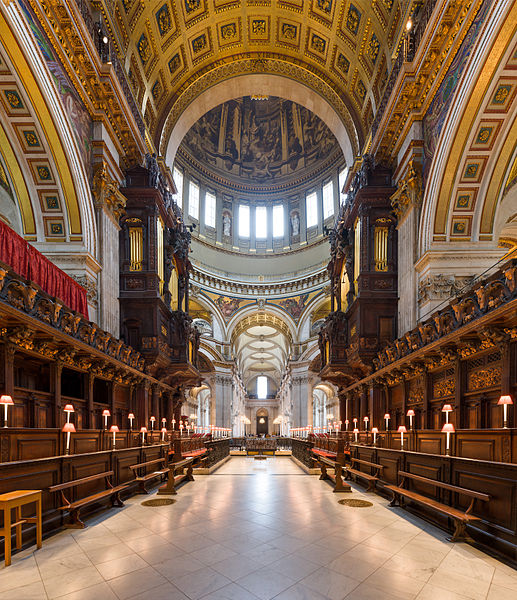
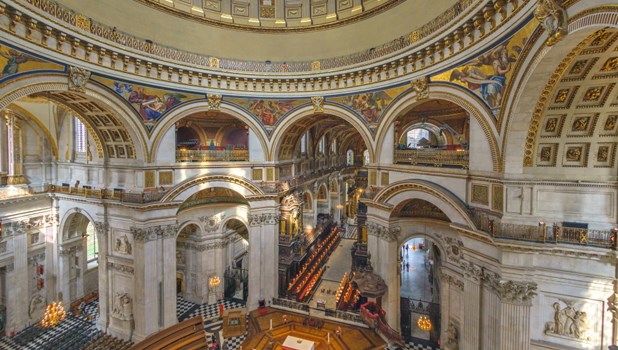
St Paul’s Cathedral is built in a restrained Baroque style which represents Wren’s rationalisation of the traditions of English medieval cathedrals with the inspiration of Palladio, the classical style of Inigo Jones, the baroque style of 17th century Rome, and the buildings by Mansart and others that he had seen in France. It is particularly in its plan that St Paul’s reveals medieval influences. Like the great medieval cathedrals of York and Winchester, St Paul’s is comparatively long for its width, and has strongly projecting transepts. It has much emphasis on its facade, which has been designed to define rather than conceal the form of the building behind it. In plan, the towers jut beyond the width of the aisles as they do at Wells Cathedral. Wren’s uncle Matthew Wren was the Bishop of Ely, and, having worked for his uncle, Wren was familiar with the unique octagonal lantern tower over the crossing of Ely Cathedral, which spans the aisles as well as the central nave, unlike the central towers and domes of most churches. Wren adapted this characteristic in designing the dome of St Paul’s. In section St Paul’s also maintains a medieval form, having the aisles much lower than the nave, and a defined clerestory.
Exterior
The most notable exterior feature is the dome, which rises 365 feet (111 m) to the cross at its summit, and dominates views of the City. The height of 365 feet is explained by Wren’s interest in astronomy. Until the late 20th century St Paul’s was the tallest building on the City skyline, designed to be seen surrounded by the delicate spires of Wren’s other city churches. The dome is described by Sir Banister Fletcher as “probably the finest in Europe”, by Helen Gardner as “majestic”, and by Sir Nikolaus Pevsner as “one of the most perfect in the world”. Sir John Summerson said that Englishmen and “even some foreigners” consider it to be without equal.
Dome
Wren drew inspiration from Michelangelo’s dome of St Peter’s Basilica, and that of Mansart’s Church of the Val-de-Grâce, which he had visited. Unlike those of St Peter’s and Val-de-Grâce, the dome of St Paul’s rises in two clearly defined stories of masonry, which, together with a lower unadorned footing, equal a height of about 95 feet. From the time of the Greek Cross Design it is clear that Wren favoured a continuous colonnade (peristyle) around the drum of the dome, rather than the arrangement of alternating windows and projecting columns that Michelangelo had used and which had also been employed by Mansart. Summerson suggests that he was influenced by Bramante’s “Tempietto” in the courtyard of San Pietro in Montorio. In the finished structure, Wren creates a diversity and appearance of strength by placing niches between the columns in every fourth opening. The peristyle serves to buttress both the inner dome and the brick cone which rises internally to support the lantern.
Above the peristyle rises the second stage surrounded by a balustraded balcony called the “Stone Gallery”. This attic stage is ornamented with alternating pilasters and rectangular windows which are set just below the cornice, creating a sense of lightness. Above this attic rises the dome, covered with lead, and ribbed in accordance with the spacing of the pilasters. It is pierced by eight light wells just below the lantern, but these are barely visible. They allow light to penetrate through openings in the brick cone, which illuminates the interior apex of this shell, partly visible from within the cathedral through the ocular opening of the lower dome.
The lantern, like the visible masonry of the dome, rises in stages. The most unusual characteristic of this structure is that it is of square plan, rather than circular or octagonal. The tallest stage takes the form of a tempietto with four columned porticos facing the cardinal points. Its lowest level is surrounded by the “Golden Gallery” and its upper level supports a small dome from which rises a cross on a golden ball. The total weight of the lantern is about 850 tons.
聖保羅大教堂以巴洛克風格建造,代表雷恩·帕拉第奧(Palladio)的靈感,英格尼·瓊斯(Inigo Jones)的古典風格,17世紀羅馬的巴洛克風格以及曼薩特(Mansart)等建築的靈感,體現了雷恩對英國中世紀大教堂傳統的合理化。他在法國見過。特別是在其計劃中,聖保羅教堂展現出中世紀的影響。像約克和溫徹斯特的大型中世紀大教堂一樣,聖保羅大教堂的寬度也相當長,並且突觸分子的投射力很強。它非常重視其立面,該立面旨在定義而不是隱藏其背後建築物的形式。按照計劃,這些塔像在威爾斯大教堂一樣突出超過過道的寬度。雷恩(Wren)的叔叔馬修·雷恩(Matthew Wren)是伊利(Ely)的主教。雷恩(Wren)為他的叔叔工作後,對伊利大教堂(Ely Cathedral)橫穿過道以及中央教堂中殿的獨特八角燈籠塔非常熟悉,與中央塔樓和大多數教堂的圓頂。在設計聖保羅大教堂的穹頂時,雷恩(Wren)適應了這一特點。在這一部分中,聖保羅大教堂還保留了中世紀的形式,其過道遠低於中殿,並設有明確的書房。
外觀
最引人注目的外部特徵是圓頂,圓頂在其山頂至十字架的高度為365英尺(111 m),並能俯瞰城市景觀。倫對天文學的興趣可以解釋365英尺的高度。直到20世紀晚期,聖保羅大教堂都是城市天際線上最高的建築,其設計旨在被雷恩其他城市教堂的精緻尖頂所包圍。班尼斯特·弗萊徹爵士(Sir Banister Fletcher)稱該圓頂“可能是歐洲最好的”,海倫·加德納(Helen Gardner)則將其描述為“雄偉”,尼古拉斯·佩夫斯納(Nikolaus Pevsner)爵士則將該圓頂描述為“世界上最完美的圓頂之一”。約翰·薩默森爵士說,英國人和“甚至一些外國人”都認為這是不平等的。
圓頂
雷恩(Wren)從米開朗基羅的聖彼得大教堂圓頂以及他曾參觀的曼薩特瓦爾德格拉塞教堂的圓頂中汲取了靈感。與聖彼得大教堂和瓦爾德格萊斯城堡不同,聖保羅大教堂的穹頂在兩個明確定義的砌體故事中崛起,加上較低的未經修飾的立足點,相當於大約95英尺的高度。從希臘十字架設計時代開始,很明顯Wren傾向於在圓頂鼓周圍形成連續的柱廊(peristyle),而不是使用米開朗基羅曾經使用過的,也由曼薩特使用過的交替的窗戶和凸出的柱子。薩默森(Summerson)暗示他在蒙托里奧(Montorio)的聖彼得(San Pietro)的院子裡受到了布拉曼特(Bramante)的《坦佩托(Tempietto)》的影響。在完成的結構中,W通過在每個第四個開口的立柱之間放置壁ches來創建強度的多樣性和外觀。圍裙用於支撐內部圓頂和內部上升以支撐燈籠的磚錐。
在peristyle上方上升的第二個階段是被稱為“ Stone Gallery”的欄杆式陽台所環繞。這個閣樓舞台上裝飾著交替的壁柱和矩形窗,窗位於簷口的下方,營造出輕盈的感覺。在這個閣樓上方是圓頂,上面覆蓋著鉛,並根據壁柱的間距加了肋。它被燈籠正下方的八個光井刺穿,但幾乎看不見。它們允許光線穿過磚錐中的開口,照亮該殼體的內部頂點,通過下部圓頂的目視開口從大教堂內部部分可見。
就像圓頂上可見的磚石一樣,燈籠分階段升起。這種結構最不尋常的特徵是它是正方形的,而不是圓形或八邊形的。最高的階段是一個tempietto形式,四個圓柱門廊朝向基點。它的最低層被“金廊”所環繞,其上層支撐著一個小圓頂,圓頂從該圓頂上升起一個十字架。燈籠的總重量約為850噸。
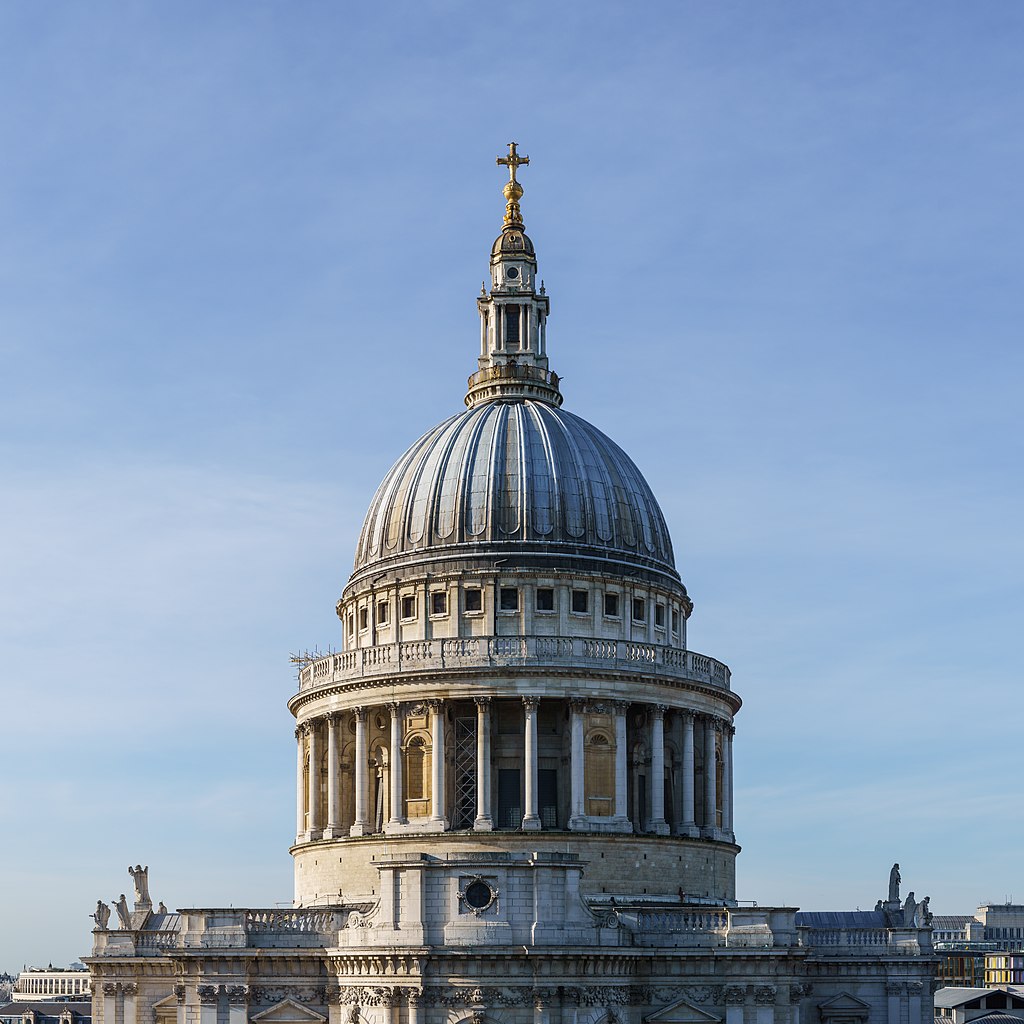

FROM:https://en.wikipedia.org/wiki/St_Paul%27s_Cathedral
FROM:360° Video: Inside St Paul’s Cathedral – BBC London
FROM:An Introduction to St Paul’s Cathedral
Don’t you think it’s addictive?
Want to know more about the beauty of architecture?
Come and join our members to explore the beauty of architectural design.
覺得看得不過癮嗎?
想要知道更多建築之美嗎?
快來加入我們的會員,一同探索建築設計之美。
The above article is purely for appreciation and sharing purposes, as well as the construction of new technology and the public can be in-depth understanding of the information at the same time there are sources, will be able to query, no use of the document as a commercial transaction, if illegal, please inform the We will immediately remove the site, thank you for cooperation.
以上文章純粹作為欣賞及分享用途,以及將建築新型技術傳遞給與大眾能夠深入了解,同時資料還有來源,將可查詢,絕無使用該文件資料作為商業交易行為,如有違法請務必告知該網站我們將立即處理撤除,謝謝合作。

